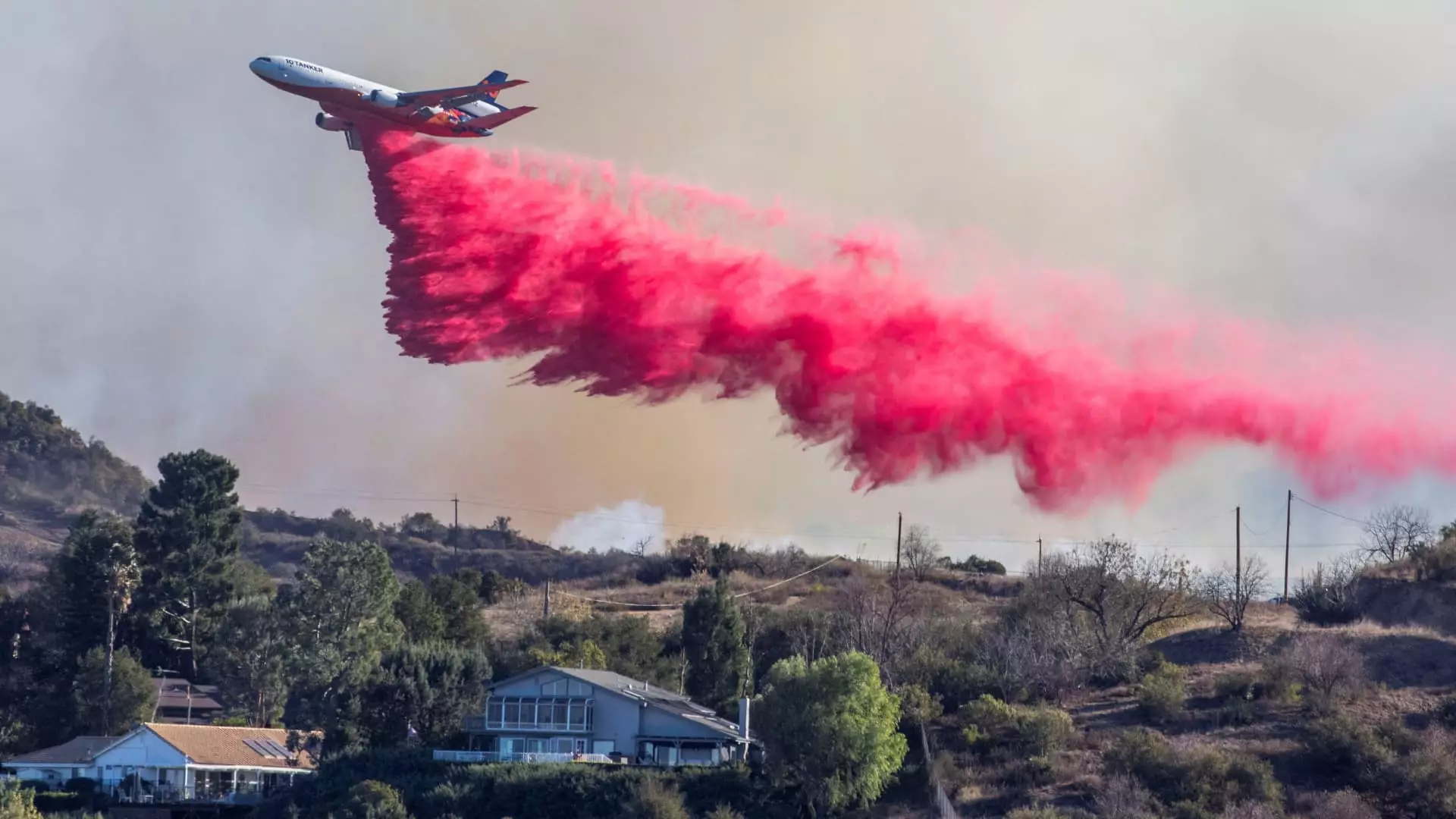As the world grapples with the escalating impact of climate change, California has become emblematic of the challenges posed by increasingly frequent and monumental wildfires. Earlier this month, wildfires devastated portions of Los Angeles, wreaking havoc under conditions typically deemed as an “off-season” for such disasters. As uncontrollable flames threatened thousands of residents, aerial firefighting companies mobilized their resources, showcasing the growing need for a robust airborne firefighting strategy. While the California Department of Forestry and Fire Protection (Cal Fire) boasts the largest civil fleet of firefighting aircraft, it’s clear that air tankers from private companies are increasingly vital in combating these raging infernos.
Amid this alarming rise in wildfire events, private firefighting firms like 10 Tanker Air Carrier are facing unprecedented demand for their services. Based in Albuquerque and boasting a fleet of converted DC-10s, 10 Tanker has recently been put at the forefront of firefighting efforts across California. Their value became critical during some of the most complex fires, such as the Palisades and Eaton fires. Joel Kerley, the company’s CEO, noted that their aerial assets had been pushed to the limit, indicating a broader systemic issue: the incessant need for aerial firefighting resources often outstrips supply.
The U.S. Forest Service’s recent renewal of contracts worth substantial sums—including a $7.2 billion deal with 10 Tanker and other companies—highlights the reliance on these private fleets. Nevertheless, with the rising intensity of fires across the nation, the industry is compelled to address the crucial question of capacity and technological advancement in firefighting aircraft.
The challenges faced by aerial firefighting teams extend beyond simple logistics. The unpredictability of wildfire behavior combined with extreme weather conditions, such as hurricane-force winds, exacerbates situations like that of the recent California fires. These natural obstacles hinder swift action, turning routine maintenance schedules into a stumbling block during crises. Companies like Belgrade, Montana-based Bridger Aerospace found their heavy winter maintenance slowing down their response times. Sam Davis, the company’s CEO, noted the enforced downtime of aircraft that should ideally be on the front lines.
The stakes are incredibly high, not only for the environment but also for the lives of residents in affected areas. Over the course of recent fires, thousands of acres were scorched, leading to massive loss of infrastructure and tragic human costs. With aerial firefighting pilots often coming from military backgrounds or transitioning from commercial airlines, their training becomes essential. However, the multifaceted challenges of aerial firefighting remain a daunting prospect, especially under adverse conditions.
NASA’s environmental data suggests that we are likely to see a continuation of increased frequency in wildfires throughout the 21st century. As noted by experts, this implies a pressing need to invest in and innovate new firefighting technologies. A notable trend is the emergence of new generation firefighting aircraft. For instance, the DHC-515 is set to be launched by De Havilland, promising advanced features that align with the future demands of aerial firefighting.
Kevin McCullough of Aero Air emphasized the lengthy conversion process required for existing jets to become effective firefighting assets. These modifications, which take extensive time and resources, serve as a reminder that immediate response capabilities depend on foresight and planning during non-crisis periods.
Beyond government contracts and aircraft readiness, a growing focus on community preparedness is becoming essential. The frequency of wildfires necessitates a collaboration that includes state, federal, and local officials, alongside private enterprises like air tanker companies. Firefighters need support from communities to establish stronger wildfire mitigation strategies, educate residents on emergency protocols, and improve infrastructure to withstand the growing threats posed by wildfires. It raises the question of how readiness can be enhanced when we are increasingly confronted with challenges born from ecological changes.
The aerial response to California’s wildfires isn’t just about aircraft; it’s about evolving capabilities to meet an ever-growing challenge. The demands placed upon firefighting agencies and private contractors testify to a new era of fire management that must embrace innovation not only in technology but also within community frameworks. The future of aerial firefighting requires collaboration on all fronts, establishing a collective resilience as we move forward in the face of a harsh new reality.

